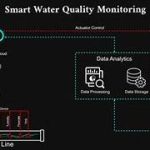AI Applications in Wildlife Conservation and Habitat Monitoring
Introduction
Wildlife conservation and habitat monitoring are essential for preserving biodiversity and maintaining ecological balance. However, traditional conservation methods often face challenges, such as limited resources, inaccessible terrains, and human error. Artificial Intelligence (AI) is transforming conservation efforts by providing advanced tools for monitoring wildlife populations, detecting environmental threats, and analyzing ecological data in real time. This article explores the various AI applications in wildlife conservation and habitat monitoring, highlighting their benefits, challenges, and future prospects.
The Role of AI in Wildlife Conservation
AI plays a crucial role in conservation efforts by improving data collection, streamlining analysis, and enabling proactive measures to protect endangered species and their habitats. Key areas where AI is making a difference include:
- Automated Species Identification: AI-powered image recognition helps classify and track animal species.
- Real-Time Poaching Prevention: AI-driven surveillance detects and prevents illegal hunting activities.
- Ecological Pattern Analysis: Machine learning models analyze animal behavior and migration trends.
- Forest and Habitat Health Monitoring: AI helps assess deforestation, wildfires, and habitat degradation.
AI Technologies Used in Wildlife Conservation
Several AI technologies are revolutionizing wildlife conservation and habitat monitoring:
1. Computer Vision and Deep Learning
Computer vision, powered by deep learning, enables AI to process images and videos collected from:
- Camera traps in forests, savannas, and marine environments.
- Aerial and satellite imagery for large-scale habitat assessment.
- Drone footage for monitoring inaccessible terrains.
AI-powered models can automatically identify species, track their populations, and detect unusual activities such as poaching or habitat destruction.
2. Predictive Analytics and Machine Learning
Machine learning algorithms analyze past and present environmental data to:
- Predict animal migration patterns based on seasonal and climatic changes.
- Identify potential threats such as disease outbreaks or habitat loss.
- Optimize conservation strategies by understanding human-wildlife conflicts.
3. Internet of Things (IoT) and Sensor Technology
AI-enabled IoT devices and sensors collect real-time data on:
- Animal movement through GPS-enabled collars.
- Water and air quality in ecosystems.
- Temperature fluctuations affecting habitats.
4. Acoustic Monitoring and AI-Powered Sound Recognition
AI algorithms analyze animal sounds, bird calls, and underwater noises to:
- Monitor species population and diversity.
- Detect distress signals indicating threats like illegal logging or poaching.
- Study marine life without intrusive human intervention.
Key Applications of AI in Habitat Monitoring
1. Deforestation and Land Use Monitoring
AI-driven satellite imagery helps conservationists track:
- Illegal logging activities.
- Land encroachment and urban expansion.
- Climate change impacts on forests and grasslands.
2. Climate Change and Environmental Impact Assessment
AI models assess:
- Rising temperatures and their impact on species migration.
- Changes in vegetation cover over time.
- Melting polar ice and rising sea levels affecting marine ecosystems.
3. Marine and Ocean Life Conservation
AI is being used to:
- Detect and prevent illegal fishing practices.
- Monitor coral reef health through automated underwater imaging.
- Track whale and dolphin populations using AI-assisted sonar mapping.
Benefits of AI in Wildlife Conservation
1. Enhanced Efficiency and Accuracy
AI reduces manual efforts, improves accuracy in species identification, and speeds up data analysis.
2. Proactive Conservation Efforts
Predictive analytics help conservationists implement preventive measures before a crisis occurs.
3. Non-Intrusive Monitoring
AI tools, such as drones and acoustic sensors, minimize human interference in sensitive ecosystems.
4. Cost-Effective Conservation
AI reduces costs associated with extensive field research, labor, and manual data processing.
Challenges in AI-Based Wildlife Conservation
1. Data Limitations and Bias
AI models require high-quality, diverse datasets, but data collection in remote areas can be inconsistent.
2. Integration with Existing Conservation Efforts
Many organizations lack the technical expertise or infrastructure to adopt AI-driven tools effectively.
3. Ethical and Privacy Concerns
Using AI for surveillance in conservation areas raises ethical concerns about data privacy and indigenous rights.
4. High Implementation Costs
Setting up AI-driven conservation systems requires significant funding and investment in technology.
Future Prospects of AI in Wildlife Conservation
- AI-Powered Conservation Drones: Autonomous drones will provide real-time habitat assessments with improved precision.
- Advanced Predictive Models: AI will refine its ability to forecast ecological changes and migration trends.
- Blockchain for Transparent Conservation Efforts: Blockchain technology will enhance transparency in conservation funding and monitoring.
- AI and Citizen Science Collaboration: AI will integrate with citizen science initiatives, allowing the public to contribute to conservation data collection.
Conclusion
AI is revolutionizing wildlife conservation and habitat monitoring by providing powerful tools for data collection, species identification, and environmental assessment. While challenges such as data quality, implementation costs, and ethical concerns remain, the future of AI in conservation looks promising. By leveraging AI-driven technologies, conservationists, governments, and communities can work together to protect endangered species and preserve ecosystems for future generations.


